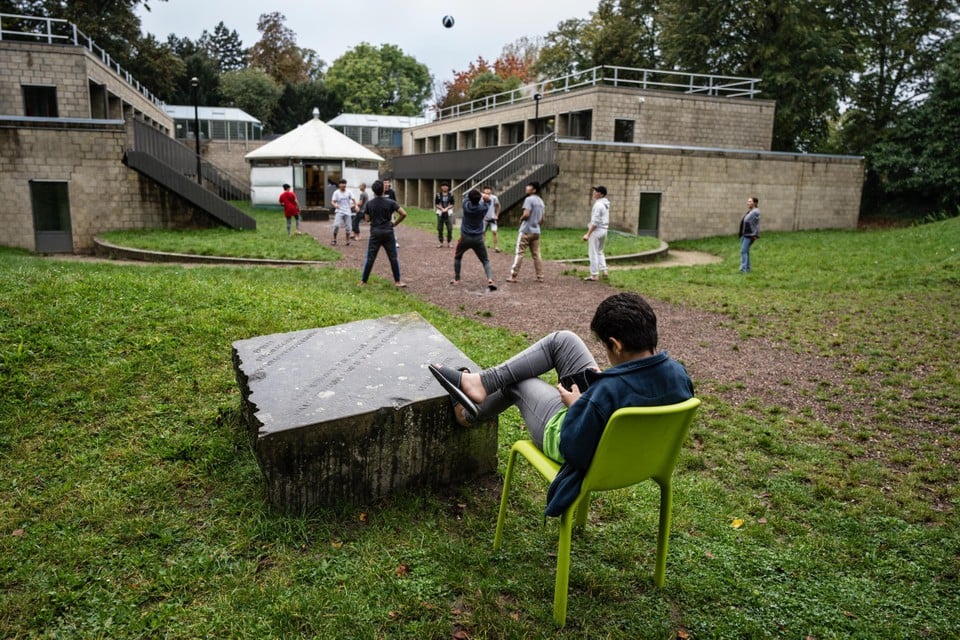Ola Larsmo: The Swedes who wanted to save refugees were highlighted

There is something strange in optics when we understand Sweden’s role during and before World War II. It is as if you cannot see a clear picture if you do not close your eyes on one eye, a bit like in a slim binoculars.
The picture has changed back and forth. The years after the war, what historian Alf W Johansson was formulated was formulated « small state realism » – we were small and could not make demands but did as best we could to defend democracy. Against this is a later left analysis that is often associated with Maria-Pia Boëthius’s book « Honor and Conscience » from 1991-where Sweden’s representatives are portrayed as fellow runners, iron ore exporters to Nazi Germany and profitors on ball bearings. Faced with such conflicting descriptions of reality, we usually solve it by saying that the truth is « in between ».
But the truth is never a compromise. It is more accurate to say that it is speckled. There was hardly a « Sweden » during those years, where the « spirit of time » pushed everyone into the same opinion. As little then as now.
It is politically healthy to review Everything that, from today’s perspective, appears morally reprehensible, which injured democracy and living people – from ball bearing exports and transit trains to the treatment of refugees. So do an open society. Very little has been left out of history research, although the political propaganda claims that things « Tigit’s to death ». I myself have written a lot about the refugee horror in pre-war Sweden.
But what disturbed me for a long time is how consistently we invisible those who did what we eventually distinguish as solidarity or, to take in: righteous. We don’t really stand out with them.
In July 1939, DN’s leadership page wrote:
“When the Swedish cultural history of the 1930s is once written, Mathilda Widegren, Nathanel Beskow, Gillis Hammar is not forgotten. They have sought to keep the waters open during the progressive icing. (…) This humanitarian heritage would be much poorer at the present moment without the impulses from these burning spirits, which put in their entire end, which put in their entire end, which put in the entire end, which put in their entire end, which put in the entire end of their own, which put in their own, which put in their own, which put in their own, which put in their own, which put in their own. been able to. ”
But no: Few today recognize these names. Annika Persson recalled Nathanael Beskow in her double biography of him and his wife Elsa last year; Gillis and Lisa Hammar and Beskow ran Birkagården Folk High School, an important oasis for refugees from Nazism. That work depicted his son Thomas Hammar in the book « Don’t forget our mission! » (2019). But now I find all the names-also Widegrens-together with so many others in historian Pär Frohnert’s new, 550-sided big venture « Help our refugees! Political and non-profit auxiliary activities in Sweden 1933-1939 ». As he himself repeatedly notes, refugee assistance is an area that is badly exploredThe in both Sweden and internationally. Such efforts have been seen as uninteresting. Maybe because we have taken the decency as too given?
Frohnert concentrates on three Larger organizations that emerged to support the refugee crowds that were forced to leave Nazi Germany after Hitler’s takeover of power in 1933. Alongside these three, there were other relief bodies – mainly the Mosaic Assembly, which assisted about as many refugees as the other organizations together, and which Pontus Rudberg has written extensively. Less movements also existed, mainly in different churches.
As Frohnert reminds, there was no real refugee policy before the First World War. On the other hand, a widespread suspicion in broad layers against early refugees, mainly Jews from Tsar Russia. In 1927, Sweden gets its first foreign law, sometimes characterized by racial biological elements – the Minister of Justice behind the law, Johan Thyrén, was also one of the founders of the Swedish Society for Racial Hygiene. The debate about the law in Parliament became fierce, where not least the Social Democrats distanced themselves from « strange German racial philosophers ». But the law is pushed through, even if the word « race » is deleted when it is reconsidered in 1932.
As early as 1934, an interesting debate arises in the Riksdag, where Social Minister Möller believes that the Swedish law contains an « asylum law » – and gets a pity from the Right’s Axel Sundberg and the Farmer’s Association’s CA Reuterskiöld. According to them, it is a misinterpretation. When the Aliens Act is again redone, in 1937, the Minister of Justice Kg Westman from the refugee Farmer’s Association is named now in a coalition with the Social Democrats. Despite harsh debates in Parliament, the new law will not include those who flee for « breeding reasons ». Refugee status mainly applies to those who have committed « political crimes », ie dissidents. The 1937 law becomes an unfinished compromise product that creates a terrible arrival on who would be admitted during the years until 1942.
As the refugee pressure increases wakes up solidarity. But as Frohnert writes, the non -profit refugee aid is given the nature of « drain pipes » – Communists help communists, labor movement and unions they find in their networks, Christians help Christians. The red aid, linked to Sweden’s Communist Party is first out, and was founded as part of the Moscow -faithful Comintern as early as 1930, for assistance to Finnish communists. One problem for RH is that you work on the Moscow Directive where social democracy – the « social fascists » – is the main enemy. Each approach to cooperation, also during a short thunderstorm, is seen by other organizations such as infiltration attempts.
The labor movement’s refugee aid takes form in 1933 when more and more German, social democratic refugees apply to Sweden. It is interesting that there is a special assistance committee in the party that is now becoming increasingly state -bearing – a committee that sometimes comes close to a collision with the own government’s refugee policy.
« The collection for free intellectuals » has probably the widest approach and is presented to the public in a broad call in October 1933, signed by well -known writers, politicians and academy members. It is mainly upset by how a large number of prominent researchers and artists now have to flee « the new Germany ». The call is not uncontroversial – some right -wing newspapers call it the « scandal call » and Helsingborgs Dagblad feared that Sweden would become a « substandard ».
In addition to Mia Leche Löfgren and medicine professor Fritz Bauer, the collection also stands the Social Democrats Gunnar Dahlberg, from 1936 head of the Ras Biological Institute, and Östen Undén – which is sometimes also minister in the government. (Undén is very present in the refugee work during these years.)
Frohnert returns to that At least you do not initially reason so much about whether the refugees you get involved with are « Jews ». The race question seems to have been of minor importance – until the persecution reaches hurricane strength. But it is a frenetic activity that is developed, sometimes desperate, as when the collection’s initiative to invite ten German special doctors with a professional ban in 1939 (an initiative by Dahlberg) encounters patrol in the form of the so -called « ball house meeting » in Uppsala.
Anyone who has worked in similar movements today recognizes a lot, not least what exile does to people. They also happened to be attempted for infiltration: Frohnert tells about the case of Kurt Büttner, a German refugee who in 1934 received a trust assignment from the labor movement’s refugee assistance, which ended with him stuck with a larger sum of money and personal acts then found in Gestapo’s archive. The case was a rewritten prestige loss – maybe all refugees were happiness seekers and infiltrators?
Frohnert chooses to finish his study at the height of the outbreak of war in 1939 – although the refugee work, of course, enters a more acute phase. It is not just about becoming much more difficult for refugees to get to Sweden when the boundaries are closed, but also that the government then, for the first time, allocated funds for « refugees’ living », a modest SEK 500,000. But the measure leads in February to a very fierce debate in Parliament. The Nazi « Swedish folk socialist » published a caricature in which Finance Minister Wigforss takes the food out of the mouth of pale blonde Swedes and instead feeds a Jewish « bearded child » with the half million.
Frohnert’s book is in the first place A stable cast platform for a further research approach. He returns to how little has been done when it comes to refugee assistance and solidarity work. But what appears on the 500 pages is also a picture of a Sweden where people want completely different things, a low -key but intense political struggle around what we can call the « Cain issue ». In the Riksdag, in 1939, half a million people can now be on the run from the Nazi terror – should we receive everyone?
We are many who have written about the betrayal against those who were kept away. Frohnert one of the few who wrote about those who tried to help. If we are now awaiting them, it may be because we are again in the middle of the battle about what « Sweden » should really stand for.
Read other texts by Ola Larsmo
Literature:
Pär Frohnert: « Help our refugees! » (Nordic Academic Press)
Annika Persson: « Elsa and Natanael Beskow: A love story« (Bonniers)
Thomas Hammar: « Don’t forget our mission! » (Stockholmia publisher)








:format(webp)/s3/static.nrc.nl/wp-content/uploads/2025/04/04111243/data130287438-072114.jpg)